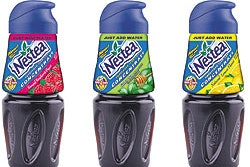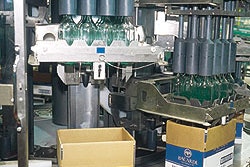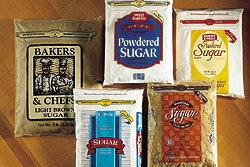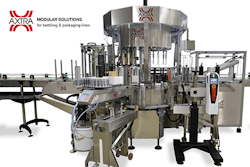
It’s not every day that the U.S. Supreme Court hears a case that has strong implications for product packaging. So the Court’s March decision in Traffix Devices, Inc. v. Marketing Displays, Inc., has left a lot of comments, not to mention chagrin, in its wake. Donald Falk, an attorney in the Palo Alto, CA, office of Mayer, Brown and Platt, says the decision was a defeat for packaged goods companies that spend large sums of money developing new, patented packaging designs. A good example of the kind of package patent Falk has in mind is Kraft Canada’s Minute Rice folding carton that employs a unique, patented pour spout (see PW, May ’01, p. 82, or packworld.com/go/minuterice). The Court ruled that once a utility patent runs out, normally after 17-20 years, the company cannot then keep competitors from using a packaging design by threatening to sue them for theft of “trade dress.” Essentially, the concept behind the ruling is that if a company employs a patent for protection against copying, it cannot later try to use “trade dress” for the same protection once the patent expires. Ted Davis, Jr., a partner in the Atlanta office of law firm Kilpatrick Stockton, agrees with Falk that the Supreme Court declared “open season” on patented packaging. But Davis sees a slight silver lining in the Court’s unanimous decision. He believes the Court made it clear, more by omission than comission, that packaging without patented features can still qualify for trade-dress protection if the trade dress is nonfunctional. Davis wrote the amicus curiae brief filed by the International Trademark Association in Traffix v. Marketing. Trade-dress protection was established by the 1946 Lanham Act, which was originally passed to protect verbal trademarks. In the ensuing years, the law’s reach has been expanded by federal courts to packaging and finally to product shapes. In his opinion on the ruling, Justice Kennedy explained the rationale: “The design or packaging of a product may acquire a distinctiveness which serves to identify the product with its manufacturer or source; and a design or package which acquires this secondary meaning, assuming other requisites are met, is a trade dress which may not be used in a manner [editorial note: i.e., copied by a competitor] likely to cause confusion as to the origin, sponsorship or approval of the goods.” The Lanham Act clearly states that functional features never qualify for trade-dress protection. In this ruling, the Court made it clear that a utility patent is extremely strong evidence of functionality. Here is how the case played out.
No package in suit MDI sued Traffix in federal district court alleging infringement of “trade dress” because Traffix had reverse engineered the “dual-spring” mechanism MDI used on its traffic signs. That patented spring design enabled the sign to stay erect in heavy winds. MDI argued that the dual-spring mechanism was so distinctive, consumers identified it with MDI signs, thus making it eligible for trade-dress protection. At the time MDI brought the lawsuit, its two utility patents had expired. The federal court ruled against MDI, arguing the utility patents proved functionality, so trade-dress relief was unavailable. An appeals court ruled in favor of MDI, setting the stage for the Supreme Court ruling. The nation’s top court reversed the appeals court decision. It ruled that the two utility patents on the springs mechanism foreclosed the possibility of trade-dress protection once those patents expired. In effect, MDI had cooked its own goose early on. While its patents were still in force, MDI had run one company out of business by charging infringement. Although the competitor’s dual-spring design looked different, it infringed on MDI’s patent, the company contended, because it served the same function. Having won on the “functionality” argument when its patents were in force, MDI was now abandoning its functionality claim, instead arguing that its mechanism had a distinctive appearance that all consumers associated with MDI. This is similar to consumers who associate the unique shape of the Coke bottle with Coca-Cola. Because of the distinctive look of its springs, MDI argued it deserved trade dress protection. In effect, the Supreme Court said, “You can’t have it both ways.” Explains Davis, “The message is that the more aggressive you are with your patent claims, the more difficult it will be for you to seek trade-dress protection in the future.”
Other decisions Although Supreme Court rulings on trade dress have been relatively rare, they have become more numerous in the past decade, causing some attorneys to scratch their heads in wonderment. “The Court has been on a tear,” explains Davis. “It is a little bit unusual to see this level of activity in this area.” The sudden interest started in 1992 in a case called Two Pesos, Inc. v. Taco Cabana, Inc., involving the interior decor of a Mexican restaurant. There, the Court said the design could be protected as trade dress. The Court followed up this decision with Qualitex Co. v. Jacobson Products Co. in 1995. The Court there affirmed that Qualitex’s distinctive green-gold dry cleaning press pad was protected trade dress. The Court said “over time, customers may come to treat a particular color on a product or its packaging. . .as signifying a brand.” So, for example, breakfast cereal companies that use too much purple in the graphic design of their raisin cereal packaging could be in violation. Their effort could be viewed as trying to associate their packages with category leader Post’s Raisin Bran, the package of which is swathed totally in purple, to confuse the consumer. That would be a violation of Post’s trade dress. In any case, the effect of the Supreme Court’s decisions in Two Pesos and Qualitex was to make it easier to get trade-dress protection. Those two Supreme Court decisions were the equivalent of a welcome mat being laid out to trade-dress infringement cases.


























